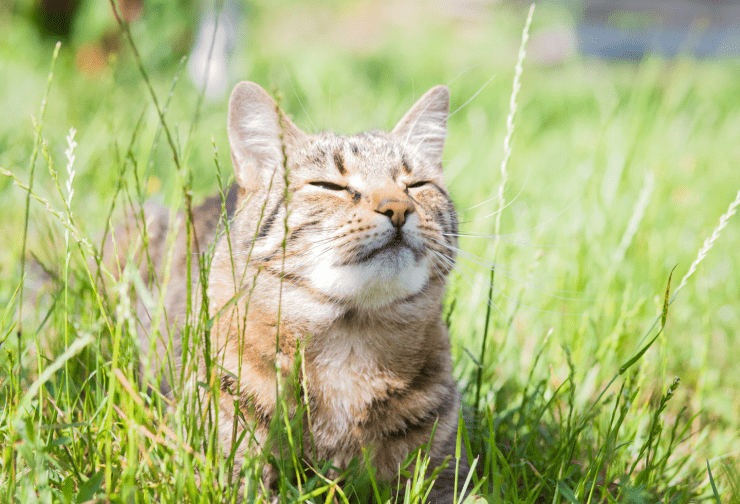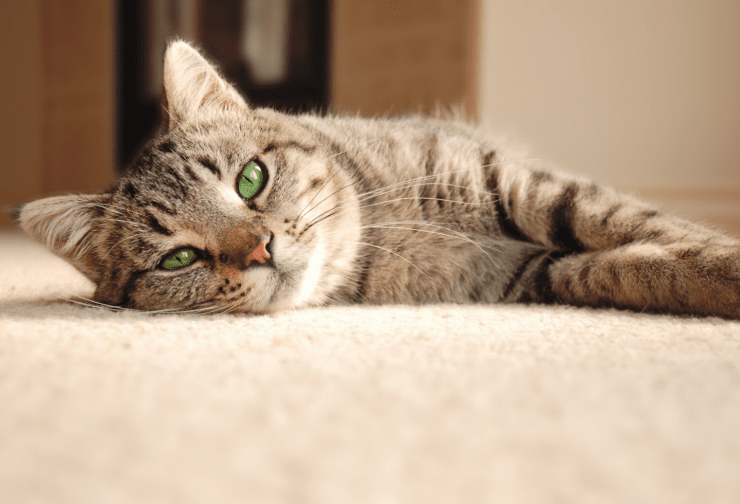Flea Identification
Find out more here about different types of fleas that can affect your dogs and cats, how to spot and identify fleas easily and all about the fast and furious flea lifecycle and, most importantly, how to break it.
Latest Articles
Flea
Identification

Why do I suddenly have fleas in my house?
Fleas can come into your home at any point and stay there for as long as 6 months. Keep reading to find out what has probably brought fleas into your home and how to get rid of them.
Flea
Identification

Can pet fleas live on human hair?
Fleas – the tiny but an absolute nightmare critters that can turn your nice, peaceful household into a fest of itching and scratching. Fleas might be small in size, but they pack a punch when it comes to disrupting our comfort for us and our pets. Turns out they can hitch a ride not just on our pet's fur, but on our locks too... Scroll to find out how to get rid of fleas for good!
Flea
Treatment, Identification, Prevention, Treatment Issues, General

How to clean your home after a flea infestation
Ahhhh f*ck you’ve got fleas! Right, let’s get to work getting rid of these little blighters so you can sleep at night. Keep reading to find out how to clean your home properly after a flea infestation without losing your mind or your favourite rug…
Flea
Identification, General

Can fleas live on your furniture?
Fleas are a common nuisance in UK households, especially if you’ve got pets. But where are they hiding and what areas of the house should you be treating for fleas?
Yes, fleas absolutely can live on your furniture but they prefer warm, breathing hosts like your pet instead. Keep reading to find out how to get rid of fleas FOR GOOD!
Flea
Identification

Fleas or mites? What is causing my dog's itchy ears?
If you've noticed your furry friend scratching at their ears incessantly, you might be wondering what's causing all that discomfort. Itchy ears can be a sign of various issues, but two common culprits are fleas and mites. Keep reading to know how to spot a flea vs a mite, and how to protect your pup from these pests!
Flea
Identification, General

What are dormant fleas?
Fleas are tiny, unwelcome guests that seem to appear out of nowhere, wreaking havoc on our poor pets and occasionally giving us a nip too. But what happens when you think you’ve dealt with them, only for them to stage a surprise comeback weeks (or even months) later? Keep reading to find out!
Flea
Identification

Flea droppings - A sign of infestation?
Ah, the notorious flea. Just the thought of them is enough to make your skin itch. If you're a pet owner or have ever encountered these tiny, pesky critters, you know the struggle is real. But what about flea droppings?
Flea
Identification

What are the black specks in my pet's fur?
Have you noticed some specks in your pet’s fur, do they look like black dirt? We’ll tell you all you need to know here!
Flea
Identification

What does a flea bite look like?
Not sure if your pet or even yourself have been bitten by fleas? Read here to see exactly what a flea bite looks like and how to prevent it!
Flea
Identification

Are fleas and ticks the same thing?
If you've ever found yourself wondering whether fleas and ticks are the same thing, you're not alone. These tiny creatures often cause confusion due to their similar size and the discomfort they bring to our furry friends. Scroll to find out the difference between fleas and ticks!
Flea
Identification

How to prepare for flea season this spring
It's Spring which means it's nearly that time of the year again... Peak flea season. Most pet owners don't realise that fleas are out and about all year-round, but as it starts to warm up, fleas come out in full force. Keep reading to find out how to avoid fleas this Spring!
Flea
Identification

How do cats get fleas?
Fleas are way more than just a bit of itching and scratching, to really understand how cats get bitten by fleas, let's talk flea lifecycle, flea hideout spots and most importantly, discover how to prevent fleas hitchhiking a ride on your cat.
Flea
Identification

How do dogs get fleas?
Your dog might be suffering with a flea infestation or you are just worried and want to avoid fleas full stop. Keep reading to find out where fleas come from, why they like our doggies so much and how to get rid of fleas for good!
Flea
Identification

How to spot fleas in your carpet
Spotting fleas in your carpet may seem like a tricky task, given their size and knack for hiding. There's a few hacks to spot these tiny creatures, so let's dive into what fleas look like and most importantly, how to get rid of them!
Flea
Identification

Can a puppy get fleas?
The wonderful world of puppies… the boundless energy, the adorable antics, and, yes, the potential for pesky fleas. Fleas are tiny but mighty nuisances that can make your puppy's life less enjoyable. This article explores the possibility of puppies getting fleas, how it can happen even if they don't venture outdoors, and, most importantly, how to prevent and treat these unwanted critters.
Flea
Identification

How long do fleas live & Do you still have fleas after treatment?
Fleas, those tiny but persistent pests, can be a real nuisance for pets and us owners. When you discover a flea infestation, you want them gone, pronto! But how long do fleas live, and do you still have fleas after treatment? In this article, we'll explore the lifespan of fleas, what happens to them after treatment, whether all treatments kill fleas immediately, and what to do if you can't seem to get rid of these pesky little critters. By the end, you'll have a better understanding of the flea lifecycle and how to effectively deal with flea infestations… easy peasy, bye-bye fleasy!
Flea
Identification

Can an indoor cat get fleas?
While most of us associate fleas with outdoor adventures, but is that always the case? The answer is yes, an indoor cat can get fleas! Fleas are agile little creatures, and even the most pampered indoor kitties are not entirely immune to them. Keep reading to find out how to prevent and treat these pesky invaders.
Flea
Identification

What do fleas look like?
Fleas, those pesky little creatures that can cause so much trouble for our beloved pets, are often hard to spot with the naked eye due to their tiny size. However, understanding what fleas look like is essential for effective prevention and treatment. Here, we explore the appearance of fleas, including pictures of fleas, their size, and the distinct features that differentiate dog fleas from cat fleas. We will also take a closer look at flea eggs and highlight other bugs that may resemble fleas, helping you to identify and deal with these nuisances.
Flea
Identification

5 ways to spot fleas!
Ah, fleas – the uninvited guests who think your pet’s blood is theirs to munch on. These tiny nuisances are more than just a bother; they’re a full-blown, hopping headache. But how can you tell if you’re dealing with fleas? Well, whether you’ve got a cat, a dog, or you’re just a worried homeowner, here are five tried-and-tested ways to spot the little blighters.
Flea
Identification, Prevention

Can fleas survive the cold?
Sorry to burst your bubble but fleas aren’t just a summer problem. Whether you are in peak infestation or have dealt with pests before, it’s wishful thinking to want fleas to disappear as the temperatures drop. Scroll to find out the best way to kill fleas and get rid of them for good!
Flea
Identification

How do you know if you have fleas?
Not sure if you’ve found a flea or a black speck on your pet? Fleas are not always easy to detect, but they are quick to turn your world upside down. If left untreated, fleas can cause full infestations, leaving you, your family and your pet itchy, frustrated and uncomfortable. Knowing you’ve got fleas is the first step to getting rid of them for good! Keep reading to be a hop ahead of these pesky pests.











